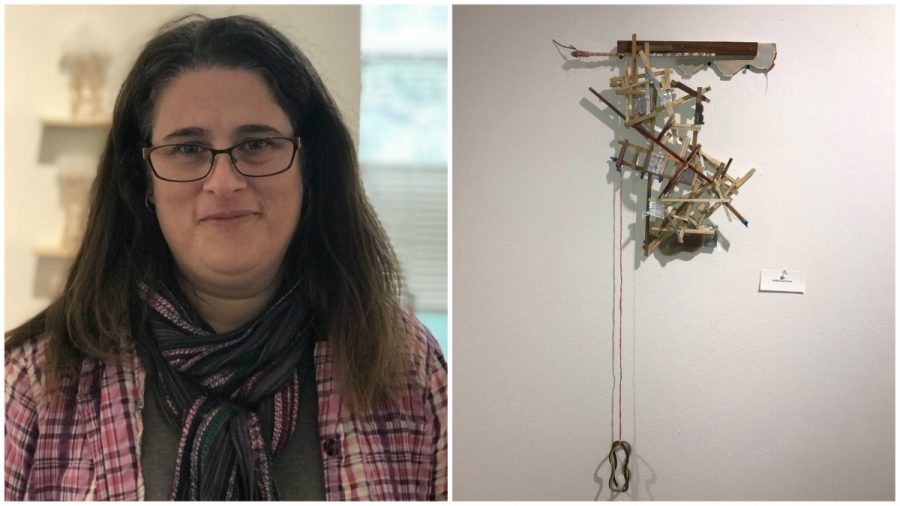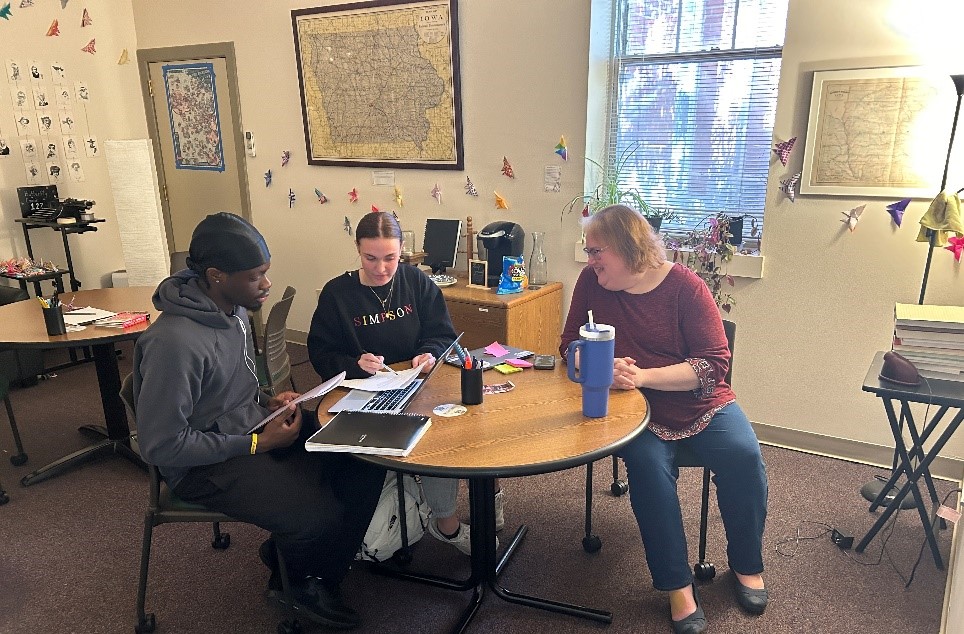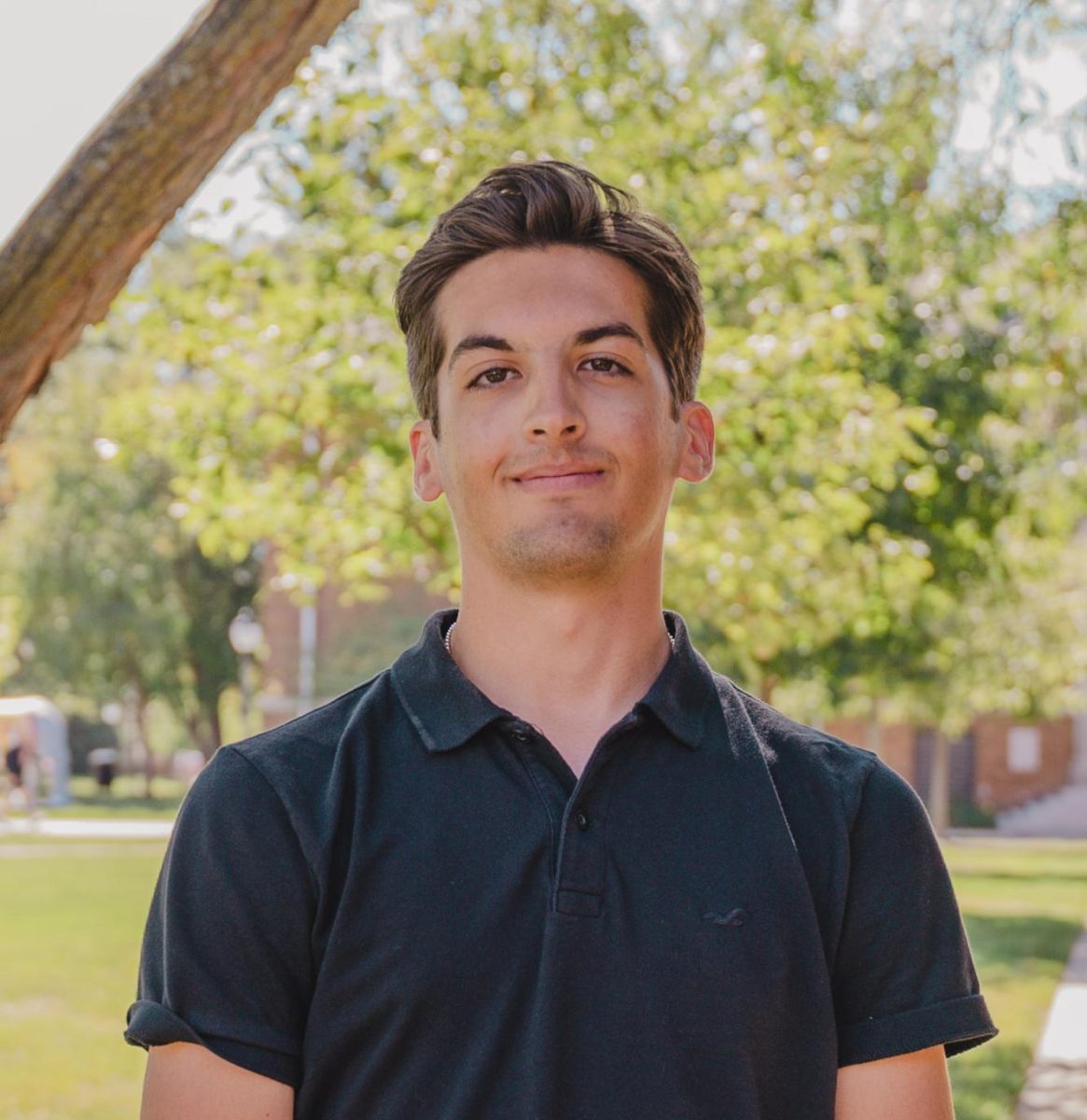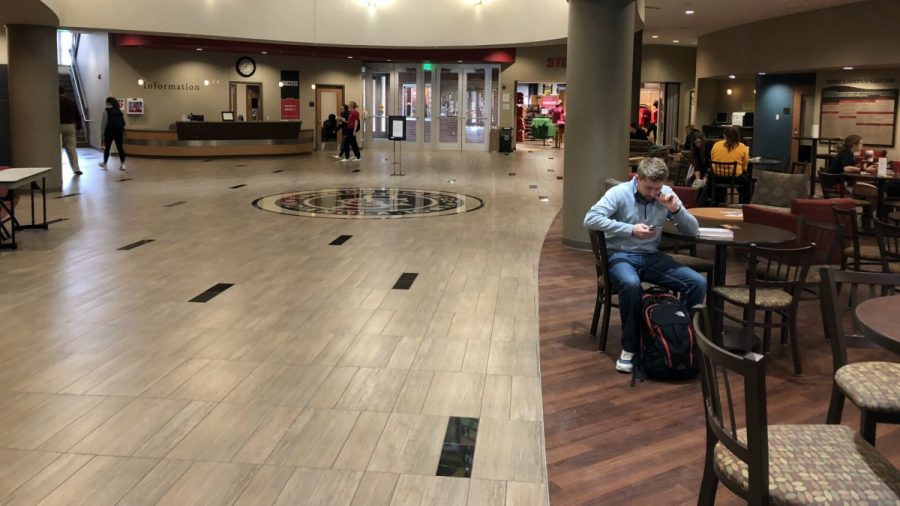Artist uses art to work through family history of multiple sclerosis
November 6, 2017
INDIANOLA, Iowa — With around 30 people in attendance, Kathyrose Pizzo, an artist and adjunct professor at Wayne State University in Detroit, held a reception for her abstract artwork in Farnham Galleries on the third floor of Mary Berry.
“The work I do is largely based on personal experience from knowing a family member near and dear to my heart with multiple sclerosis,” Pizzo said.
According to the National Multiple Sclerosis Society, MS is a chronic disease in the central nervous system that can impair any function, even paralysis. Symptoms may worsen over time.
“Primarily my work deals with restrictions, time, protection and confinement,” she said. Many of her pieces involve a contrast in soft gray figures surrounded by wooden structure.
“Even though there might be chaos around it, there’s hope,” Pizzo said, describing a soft, gray, cloud-like fabric shape surrounded by wood titled “Breaking.”
Pizzo admits she doesn’t have any answers to life. “Those are the things that make me want to do the work, are the questions I don’t have to have the answers,” Pizzo said.
One sculpture includes soft textured cushions suspended above wooden structures resembling scaffolding. An orange flag flies on one end.
“With life comes death,” she said about the piece.
Pizzo said the orange signified communication and the suspended cushions are there for comfort to the loved one.
The distance between the cushion and floor represent a certain emotional space needed while watching a loved one struggling, according to Pizzo.
“I don’t think it’s okay to burden them with your emotion. They need to do their own thing,” Pizzo said.
Pizzo said the sculpture was referencing tree and scaffold burials by Native Americans. “That’s a part of honoring the soul,” she said.
Pizzo said that the connection to MS was that they were prisoners to their bodies.
Many students in attendance were art majors and Pizzo shared some of her creative process.
“I work two ways. One way is that I see it from beginning to end, and the other way is where I will start to work on my work table, start hammering and cutting and put it on the wall, and take it off the wall and work again and respond to it,” she said.
Pizzo mentioned one of the sculptures took two years to finish.
At one point a student asked Pizzo how she deals with blocks in inspiration and focus. “Just walk away from it,” Pizzo said.
Professor Dave Richmond half joked “but you can’t do that.” Pizzo agreed that deadlines must be met regardless.
“It’s not art therapy it’s just art,” Pizzo said of the exhibit. “I’ve already been to therapy.”
Pizzo didn’t dive into this project thinking it would be about MS.
“It wasn’t until I started this body of work and was like ‘Oh my God, I didn’t know this was something I needed to talk about’ and talked about it through my art,” Pizzo said.







